 Recently Mary Ellen Grogan at NEHGS shared a great resource with me. It is called the Special report on surnames in Ireland [together with] varieties and synonymes of surnames and Christian names in Ireland by Robert E. Matheson. It is available in the NEHGS library. Copies of the “special report on surnames” and the separate “varieties and synonymes of surnames and Christian names” are also available digitally on HathiTrust. Continue reading Irish name variations
Recently Mary Ellen Grogan at NEHGS shared a great resource with me. It is called the Special report on surnames in Ireland [together with] varieties and synonymes of surnames and Christian names in Ireland by Robert E. Matheson. It is available in the NEHGS library. Copies of the “special report on surnames” and the separate “varieties and synonymes of surnames and Christian names” are also available digitally on HathiTrust. Continue reading Irish name variations
Tag Archives: Critical Analysis
ICYMI: Shorthand systems
[Editor’s note: This blog post originally appeared in Vita Brevis on 3 October 2016.]
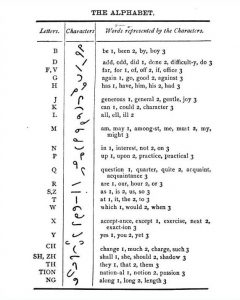
One day, when searching through the town records of New Haven, Connecticut, I was struck by one of the entries. The writing appeared like nothing I had ever seen before. After asking others for their thoughts, we found that none of us had ever seen this form of writing before. After some research, I discovered that what I had found was notation written in Taylor Shorthand, a system of writing developed by Samuel Taylor in 1786, the first system of shorthand writing to be widely used across the English-speaking world.[1]
Shorthand has long been used as a method of notation, often when time or efficiency is imperative, and as a result, it often appears in court documents and meeting minutes. Continue reading ICYMI: Shorthand systems
‘Indifferent to the world’
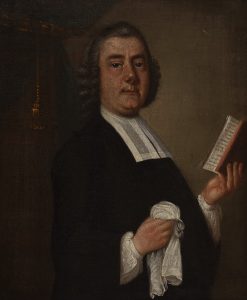
William Clark began keeping a journal in 1759 at the age of eighteen. He wrote an entry for almost every day until he died in 1815 at the age of seventy-five. The entire journal – fifty-six volumes and almost five thousand pages – is now held by the New England Historic Genealogical Society in Boston. Clark carefully recorded his neighbors’ births, marriages, and deaths, providing rich pickings for family history researchers, but the author of the journal is himself a fascinating character: a convert, a loyalist, and a refugee.
Clark was an Anglican clergyman by the time of the American Revolution, but – like many New England Anglicans – he had first joined the Church of England as a convert. His father, the Rev. Peter Clark, was a Congregationalist minister in Danvers, Massachusetts, and a leading “old light” defender of the colony’s Congregationalist establishment. Continue reading ‘Indifferent to the world’
James O’Neil revisited

Over a year ago I wrote a Vita Brevis post about my great-great-great-grandfather, James O’Neil, who successfully sued the town of St. Johnsbury, Vermont, for the wrongful death of his daughter, Emily O’Neil. I had only recently learned that James had three children in Vermont before moving to Boston in the early 1870s: Mary Ellen (1864), Arthur Michael (1866), and Emily Ann (1867). Continue reading James O’Neil revisited
Humoresque
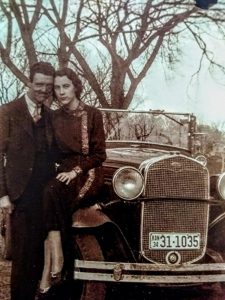
Lately, it seems like I can’t catch a break! You see, I’ve been trying to put some good old-fashioned humor back into my life – without much success. Finding humor (or laughter) these days seems to take a whole lot of effort – and an even bigger dose of understanding. It’s as if the world has become filled with folks who are afraid to, you know … smile. I just don’t get it, as I’m pretty sure we were all schooled that facing the world each day with a smile makes the world a better place, right? Because of this, I’ve started to wonder about the ancestral origins of my own tomfoolery – and if any sense of humor isn’t “relative” after all.
Now, I can’t pretend to know the history or psychology behind humor or laughter. But it sure does function differently for each of us. Take the other day, for example. Continue reading Humoresque
Contact those cousins!
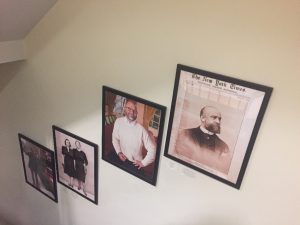 NEHGS president Brenton Simons recently proposed an “Ancestral Gallery” – a series of paired portraits of staff members with their ancestors and relatives, to hang in the building’s staircase. Jean Powers coordinated the effort with staff members who could contribute pictures for the first exhibit. The gallery debuted before our recent annual meeting. I was one of the staff who contributed a picture of an ancestor, and so for these last few weeks I have seen a large picture of myself next to my ancestor, followed by several colleagues, on my way up the stairs! The exercise was also another great example of reaching out to local organizations and distant relatives for material. Continue reading Contact those cousins!
NEHGS president Brenton Simons recently proposed an “Ancestral Gallery” – a series of paired portraits of staff members with their ancestors and relatives, to hang in the building’s staircase. Jean Powers coordinated the effort with staff members who could contribute pictures for the first exhibit. The gallery debuted before our recent annual meeting. I was one of the staff who contributed a picture of an ancestor, and so for these last few weeks I have seen a large picture of myself next to my ancestor, followed by several colleagues, on my way up the stairs! The exercise was also another great example of reaching out to local organizations and distant relatives for material. Continue reading Contact those cousins!
Too young
 Clarence Almon Torrey’s New England Marriages Prior to 1700 is a wonderful guide to material in published genealogies and articles at the NEHGS library. Often the entries have dozens of citations to sources. There are other entries, however, that are really short, such as:[1]
Clarence Almon Torrey’s New England Marriages Prior to 1700 is a wonderful guide to material in published genealogies and articles at the NEHGS library. Often the entries have dozens of citations to sources. There are other entries, however, that are really short, such as:[1]
CUTTING, John Jr. & _____ _____ (had dau Mary); bef 1642
This type of entry can derive from a birth record for a child, but the citation to the child’s birth should be included. Where did Torrey find information on a John Cutting Jr. who married an unknown woman before 1642 and had a daughter Mary. And “grrrr”: why didn’t Torrey give a citation? Continue reading Too young
Genealogical healing
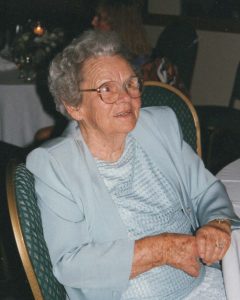
Among the emotions experienced at the conclusion of a genealogical investigation – surprise, satisfaction, pride, shock, joy, bewilderment – healing ranks high on my list. Almost 20 years ago, my friend Nancy Parsons Crandall asked me to prepare a family genealogy as a wedding gift to her son.
Nancy grew up with little family information of any kind. Three of her grandparents – two in Woonsocket, Rhode Island, and one in Rutland, Vermont – died within a month of one another during the flu epidemic of 1918. Continue reading Genealogical healing
ICYMI: Lost generations

[Author’s note: This blog post originally appeared in Vita Brevis on 9 September 2016.]
One of the trends in my ancestry is the curious one whereby, when given the choice between staying in a locale or moving on, my nineteenth-century forebears often remained behind as other relatives ventured further west. One of the sadder family stories is covered in the 1999 book Intimate Frontiers: Sex, Gender, and Culture in Old California, by Albert L. Hurtado, and concerns my great-great-great-uncle John Henry Beeckman (1818–1850).
Uncle John was the eldest son of Henry Beeckman and Catherine McPhaedris Livingston, and the family was a prosperous one in the days before the Civil War. That they were socially acceptable to New Yorkers and Virginians alike is suggested by the fact that John H. Beeckman married Margaret Gardiner in 1848 at the Virginia plantation of the bride’s brother-in-law, former President John Tyler. Still, John Beeckman was a young man, fired up by the discovery of gold in California, and in 1849 he left bride and newborn son to travel west. Continue reading ICYMI: Lost generations
A superfluity of Hamiltons

A recent review of my ancestral royal lines has suggested that they are all, in one way or another, problematic – either the line breaks here, in America, or there, in the British Isles. One approach I’ve tried, in a desultory way, is to look at all the lines around the desired royal one, creating an ancestor table (or ahnentafel) to manage the information (and keep me honest!).
I am a descendant of Robert Livingston, the first Lord of Livingston Manor (1654–1728), whose rank as a patroon testifies to his success as a land speculator in the Colony of New York. In roughing out an ancestor table for Robert, I was struck anew by the way even well-to-do families with property to inherit seem so often to lack agreed-upon pedigrees supported by contemporary records. Continue reading A superfluity of Hamiltons